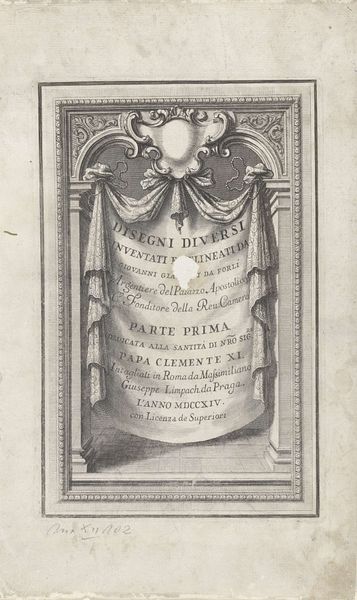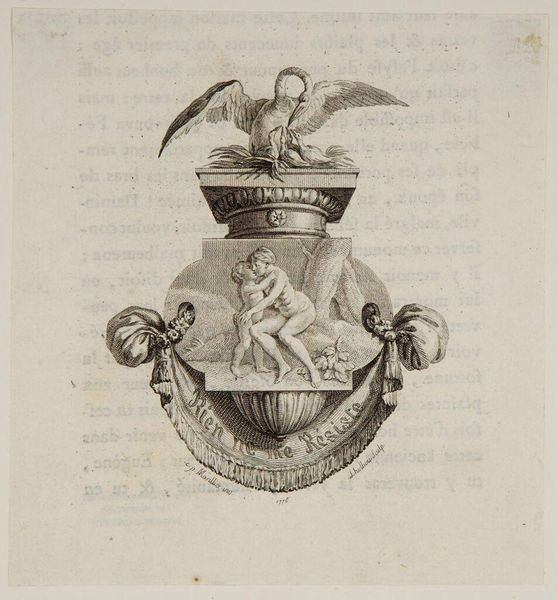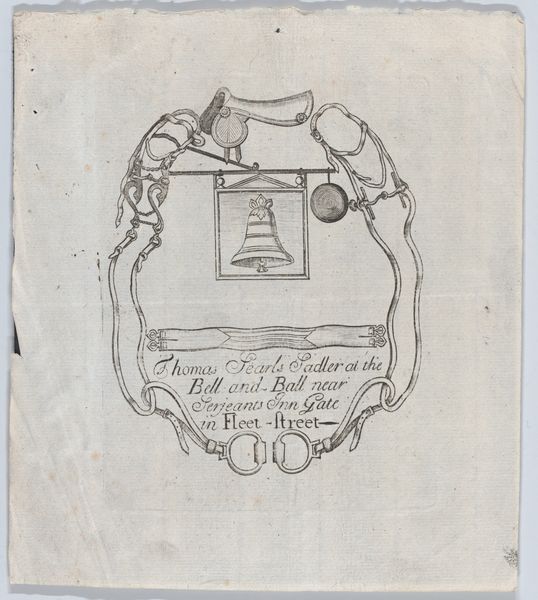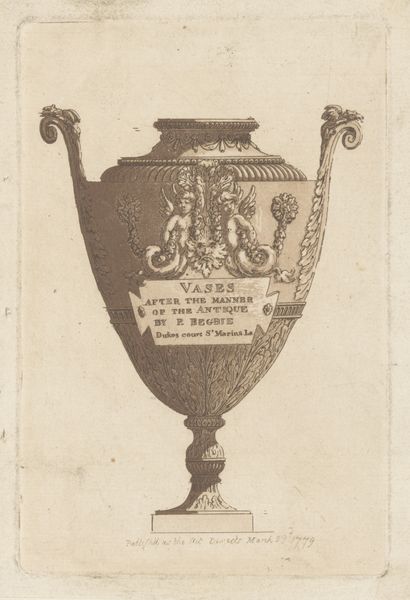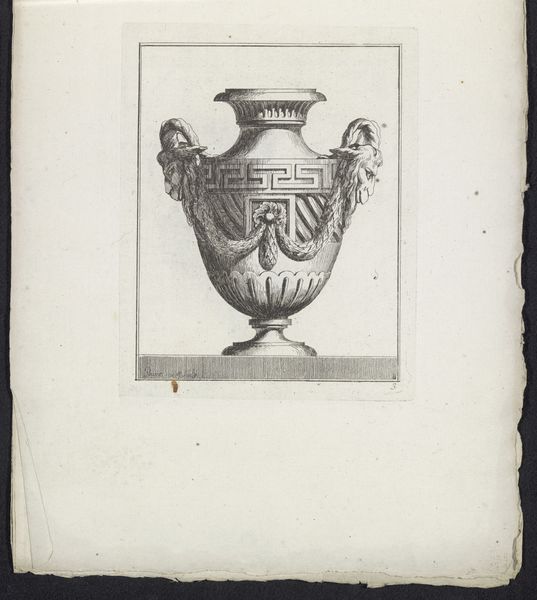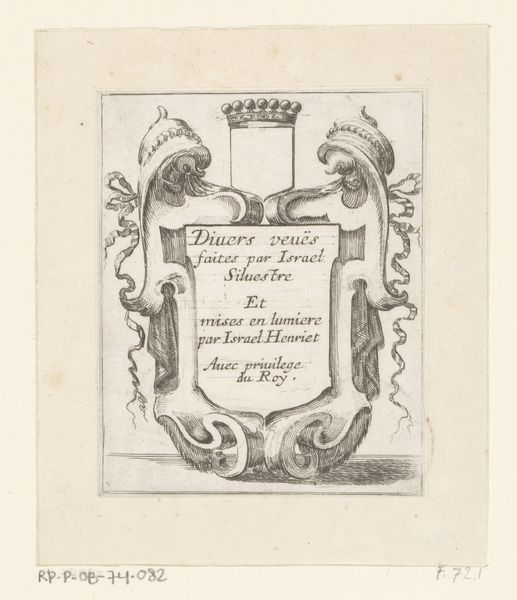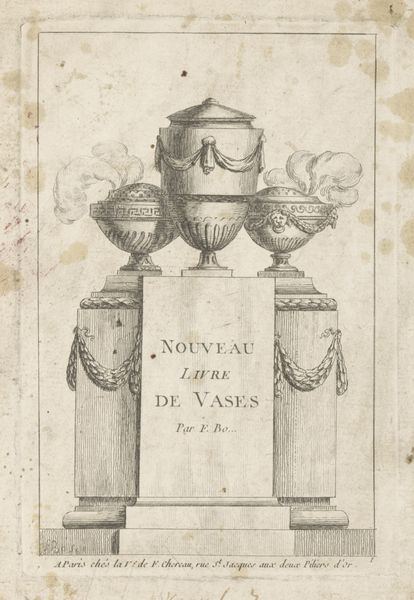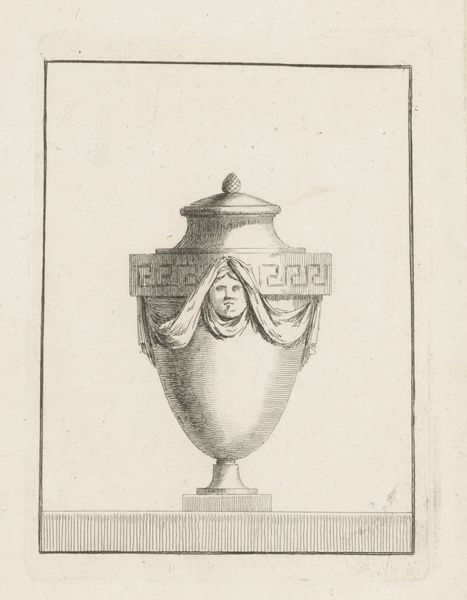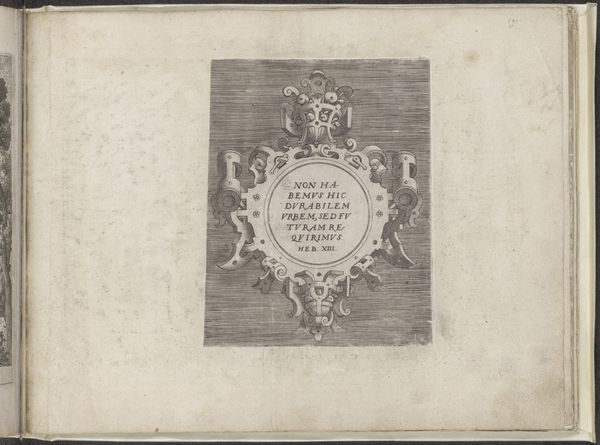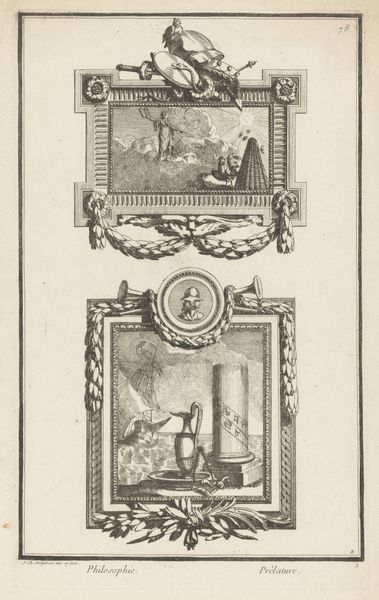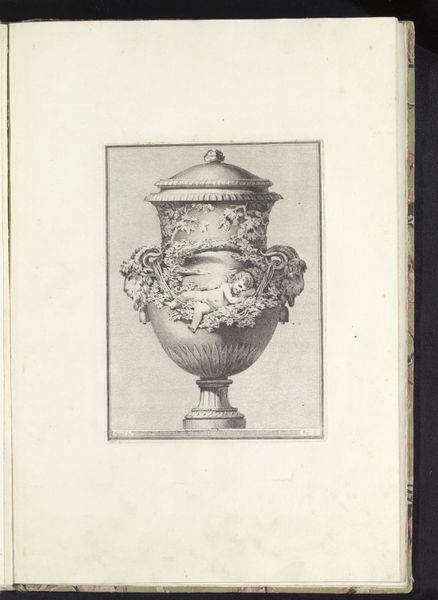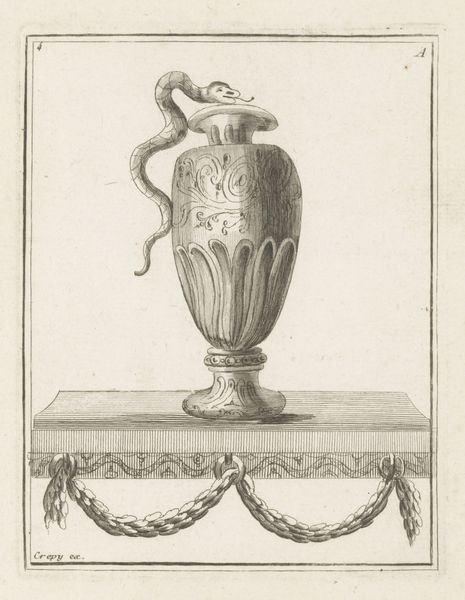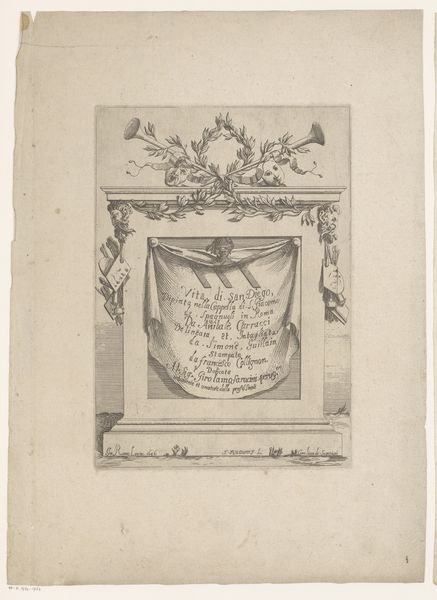
Dimensions: height 133 mm, width 100 mm
Copyright: Rijks Museum: Open Domain
Juste Nathan Boucher created this print of a vase at an unknown date in the 18th century. During this time, France was experiencing a period of significant artistic and cultural development under the reign of Louis XV and Louis XVI, and decorative arts like vase design were highly valued. This image reflects the era’s interest in classical forms and the Rococo style, known for its elegance and ornate details. The vase, elevated on a pedestal, is draped with fabric, lending it a sense of importance, of reverence. Yet, what does it mean to display such an object in a society marked by vast economic disparities and social hierarchies? How does an image like this play into the politics of taste and access? It speaks to a world where beauty and art were often intertwined with power and privilege. Consider how Boucher’s print serves not only as a decorative piece but also as a symbol of the complex interplay between art, identity, and societal structures. It invites us to reflect on the emotional weight and cultural narratives embedded within seemingly simple forms.
Comments
No comments
Be the first to comment and join the conversation on the ultimate creative platform.

